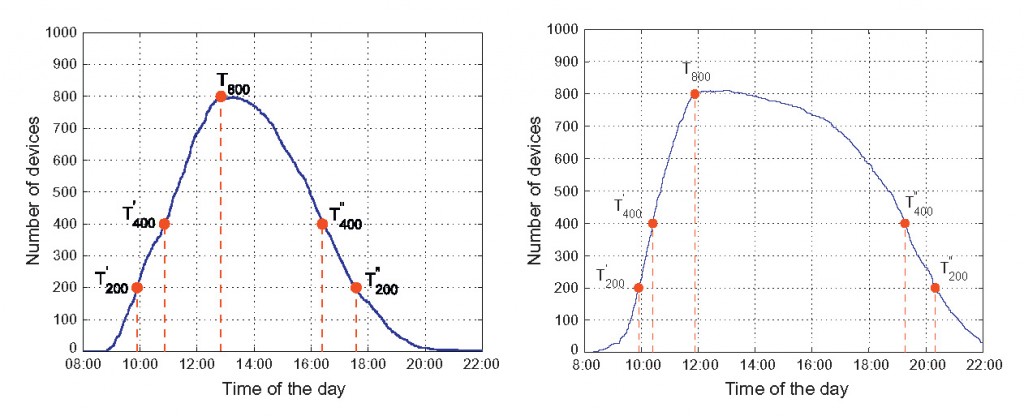Abstract

Ad hoc networks of wireless devices carried by entertainment park visitors can support a variety of services. In such networks, communication links between the devices sporadically appear and disappear with the mobility of visitors. The network performance strongly depends on how often they encounter each other and for how long the contact opportunities last. In this paper, we study the mobility of visitors based on GPS traces collected in two entertainment parks. We demonstrate and discuss the implications of the observed mobility on the efficiency of opportunistic data forwarding. We show how hourly changes in the number and spatial distribution of the park visitors affect the delay of a broadcast application. Our results suggest that generic mobility models commonly used in wireless research are not appropriate to study this and similar scenarios: Targeted mobility models are needed in order to realistically capture non-stationarity of the number and spatial distribution of nodes. Therefore, we developed a mobility simulator for entertainment parks that can be used to scale up the evaluation scenarios to a large number of devices. The simulator implements an activity-based mobility model, where the mobility of park visitors is driven by the activities they wish to perform in the park. The simulator is calibrated based on the GPS traces and validated on several metrics that are relevant for the performance of wireless ad hoc networks.
Copyright Notice
The documents contained in these directories are included by the contributing authors as a means to ensure timely dissemination of scholarly and technical work on a non-commercial basis. Copyright and all rights therein are maintained by the authors or by other copyright holders, notwithstanding that they have offered their works here electronically. It is understood that all persons copying this information will adhere to the terms and constraints invoked by each author’s copyright. These works may not be reposted without the explicit permission of the copyright holder.